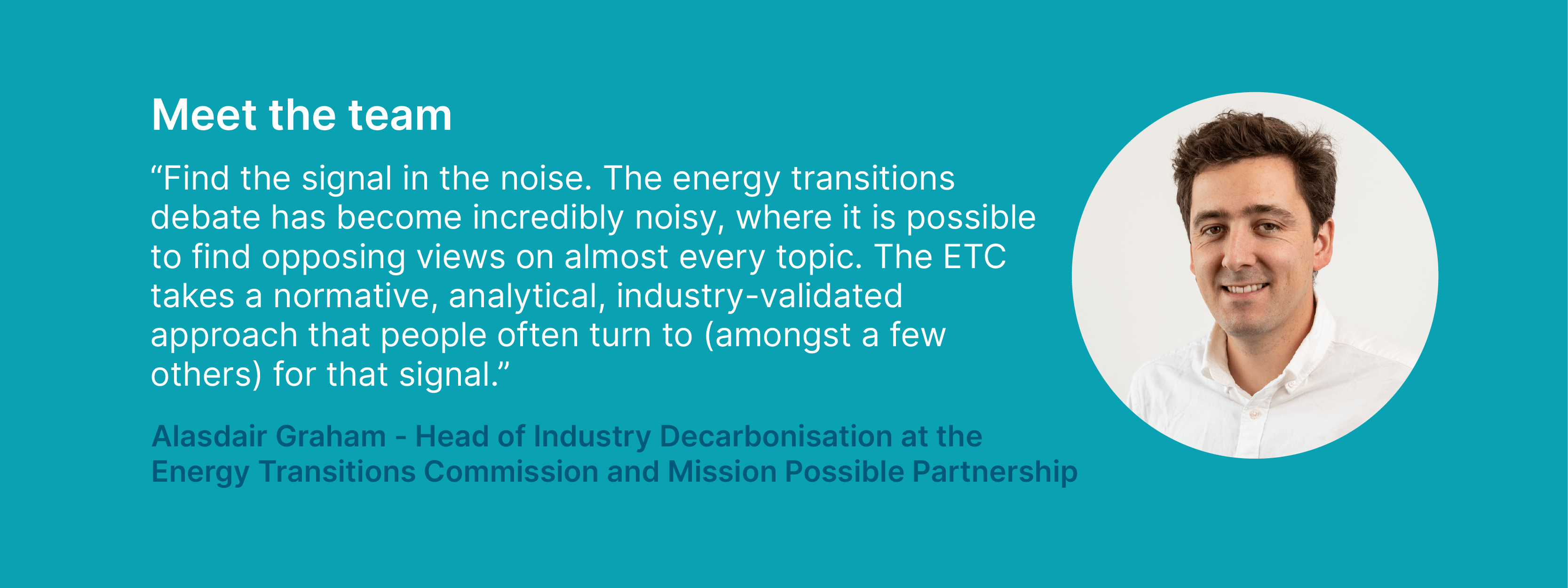Today we introduce Alasdair Graham, Head of Industry Decarbonisation at the Energy Transitions Commission and Mission Possible Partnership.

- What made you join the ETC?
The creation of ETC was an idea ahead of its time. People were working on different pieces of the puzzle, but few were able to put it all together and take a whole-system perspective. When I joined back in 2018, the ETC were a unique group that did serious and sometimes groundbreaking analysis, listened to and challenged the people who run these industries, provided a public good with no agenda (other than the climate objective), and took a (conditionally) optimistic perspective.
- What is your proudest achievement to date at the ETC/MPP?
There is no doubt that the Mission Possible work lit a touchpaper amongst researchers, decision-makers and governments on the techno-economics of decarbonising heavy industry and heavy-duty transport. There were no large whole-economy models involved, just elegant calculations of what it would cost and what it bring. Large and increasingly complex models can now drill deeper into the problems, but the calculations and narrative have stood the test of time.
- What has happened in the last year that makes you most optimistic about the energy transition?
We’re seeing a shift from narrative-setting and debates over what is possible to how to get this done – from ‘Should we do this?’ to ‘How do we do this?’ and demonstrates that boards and investors are getting serious. This is resulting in the first set of final investment decisions (FIDs).1Final investment decision (FID): The last stage in determining whether investment in an infrastructure project will go ahead or not. Of course, the decarbonisation of heavy industry cannot be assigned to only one project or asset. The whole system of production often needs to change. The risk profile of these pilot plants or early-stage technologies does not match what many investors are looking for, so a whole-of-company approach is needed. The scale and risks of this mean that this is probably where public mission-driven investment is required.
- On the pathway to net zero, what do you see as the biggest obstacle?
The net-zero transition will inevitably create winners and losers as entire value chains are redrawn. People assume that cracking the business model will be the hardest step. Getting the ‘first ten’ assets built in each sector will doubtlessly pose challenges. However, the drawing of value chains at scale will run into more complex questions relating to national priorities, labour markets and international relations – expect things to get political as winners and losers emerge.
- What are you most excited about that is coming up at the ETC/MPP?
I am fascinated to see how the new Fossil Fuels In Transition report lands at COP28. It’s the right side of serious, timely, thoughtful and provocative.
- What is the best piece of advice that you received from an ETC/MPP colleague?
Find the signal in the noise. The energy transitions debate has become incredibly noisy, where it is possible to find opposing views on almost every topic. The ETC takes a normative, analytical, industry-validated approach that people often turn to (amongst a few others) for that signal.


